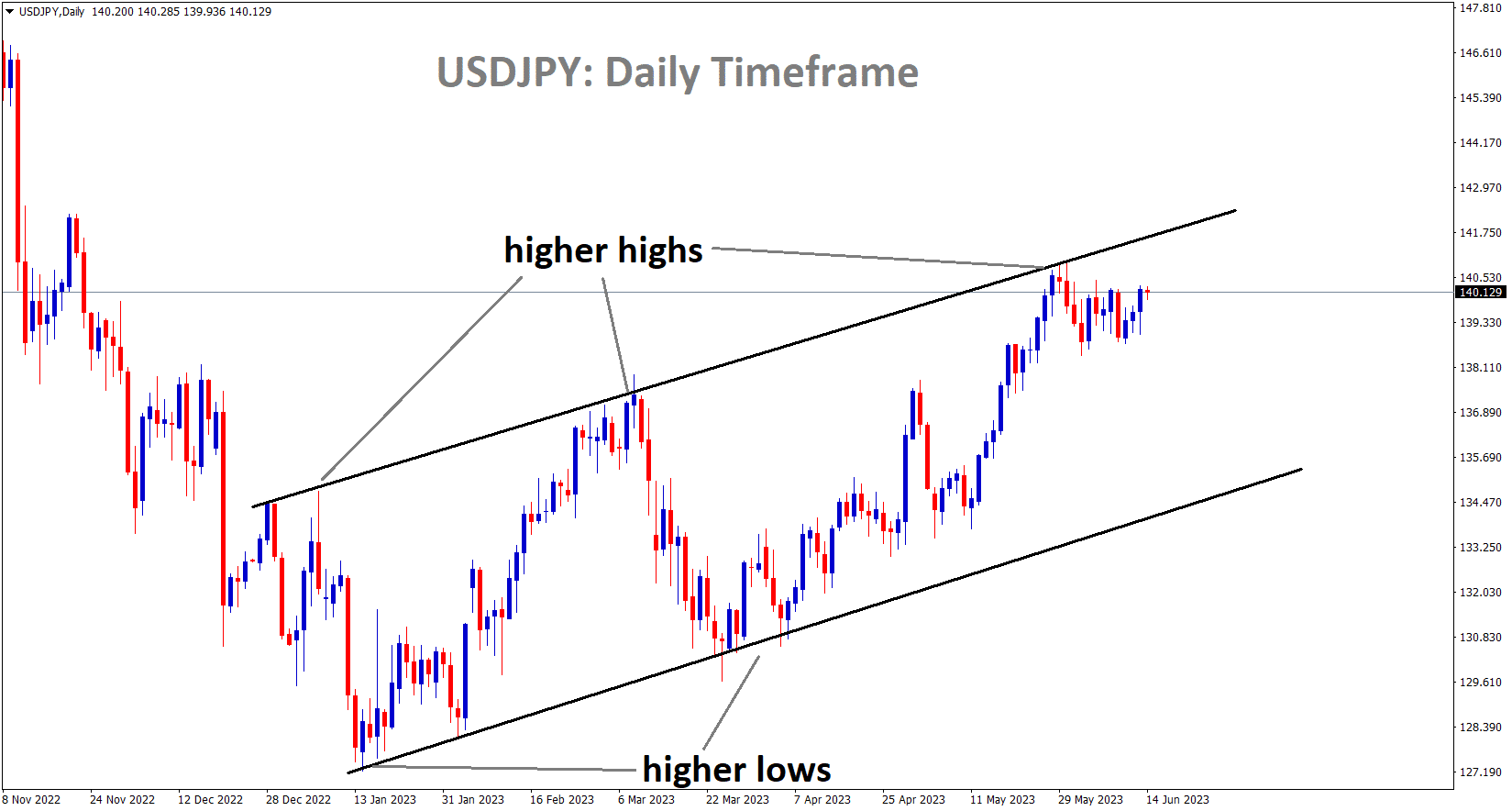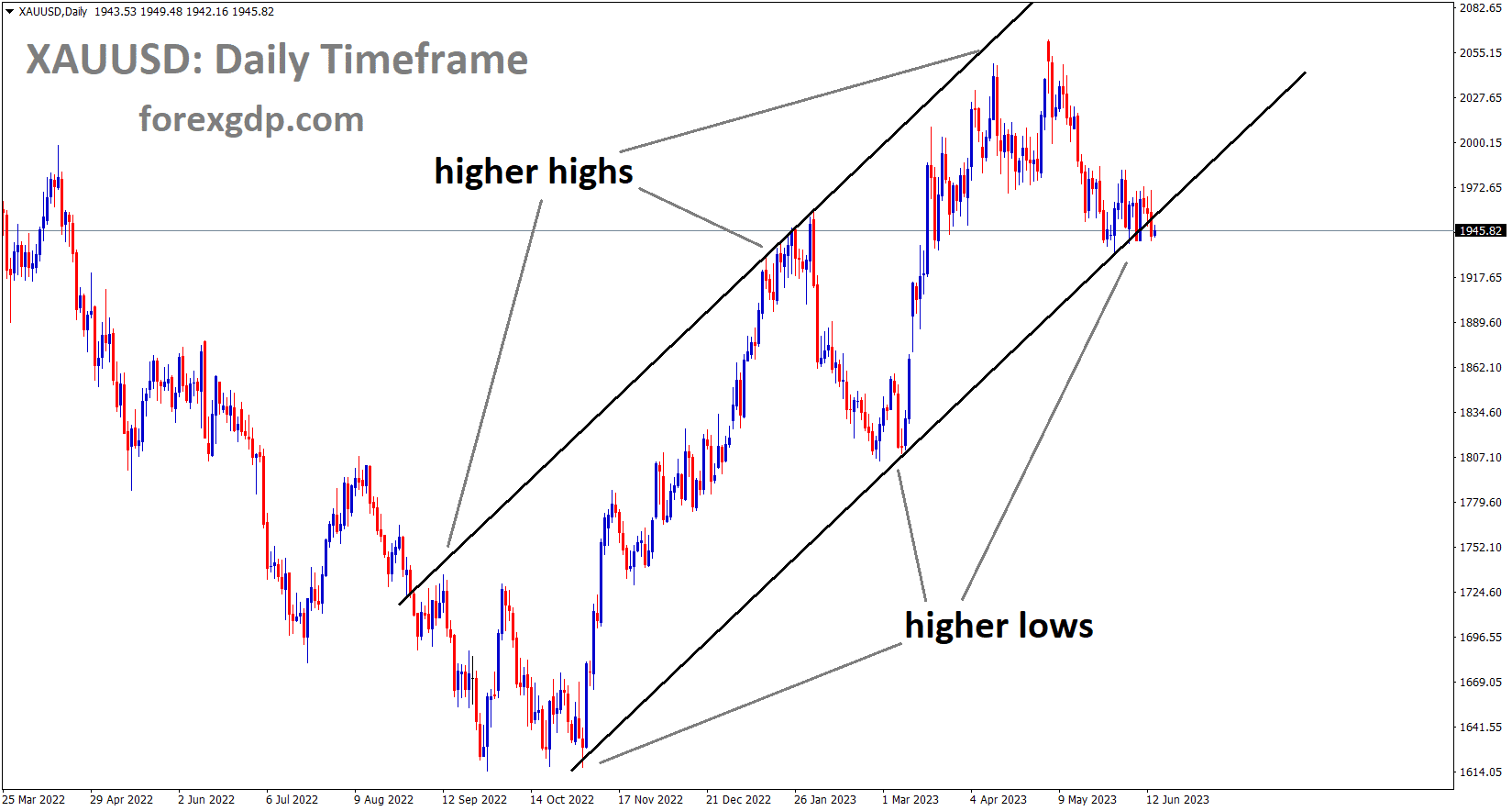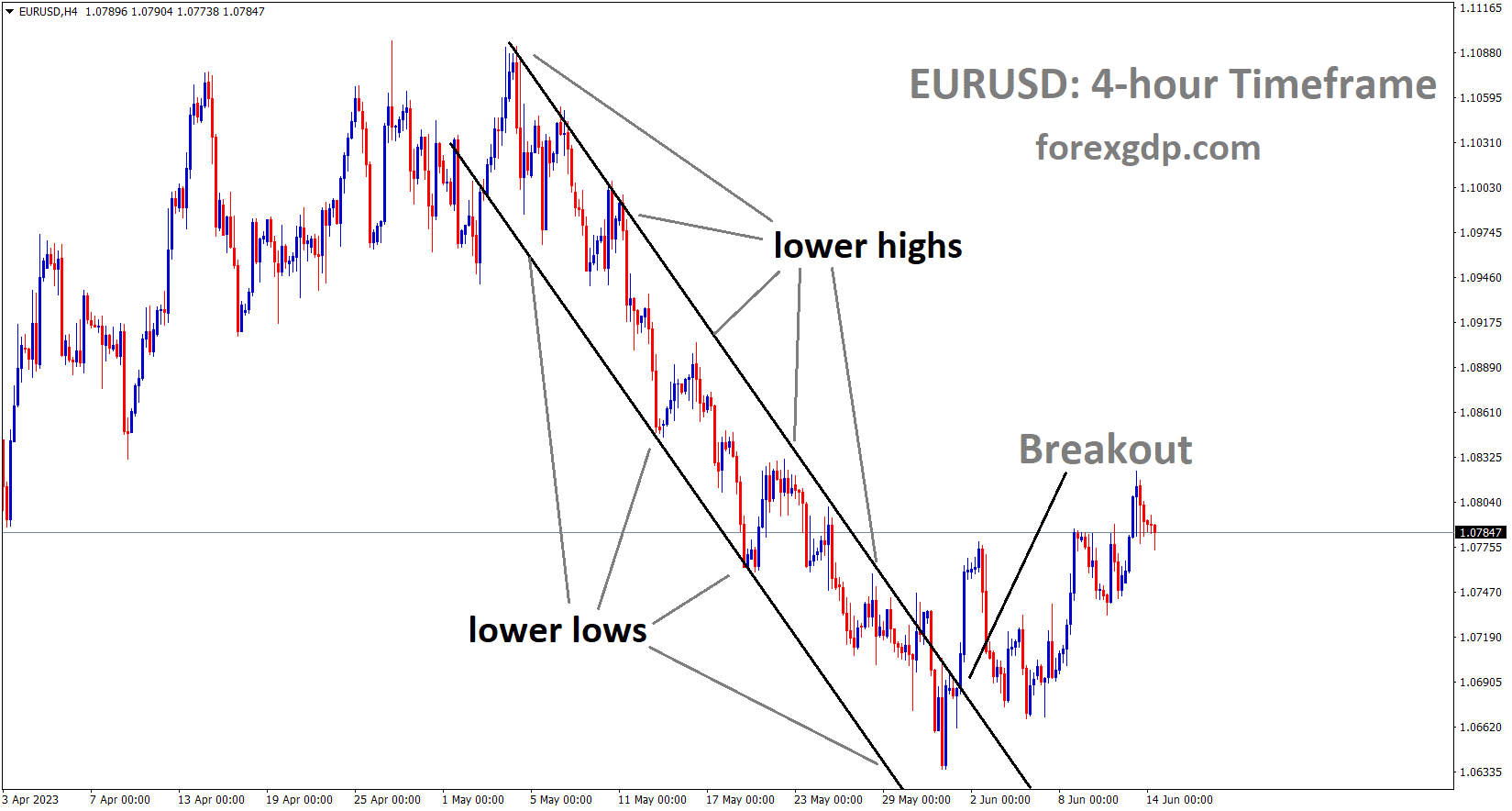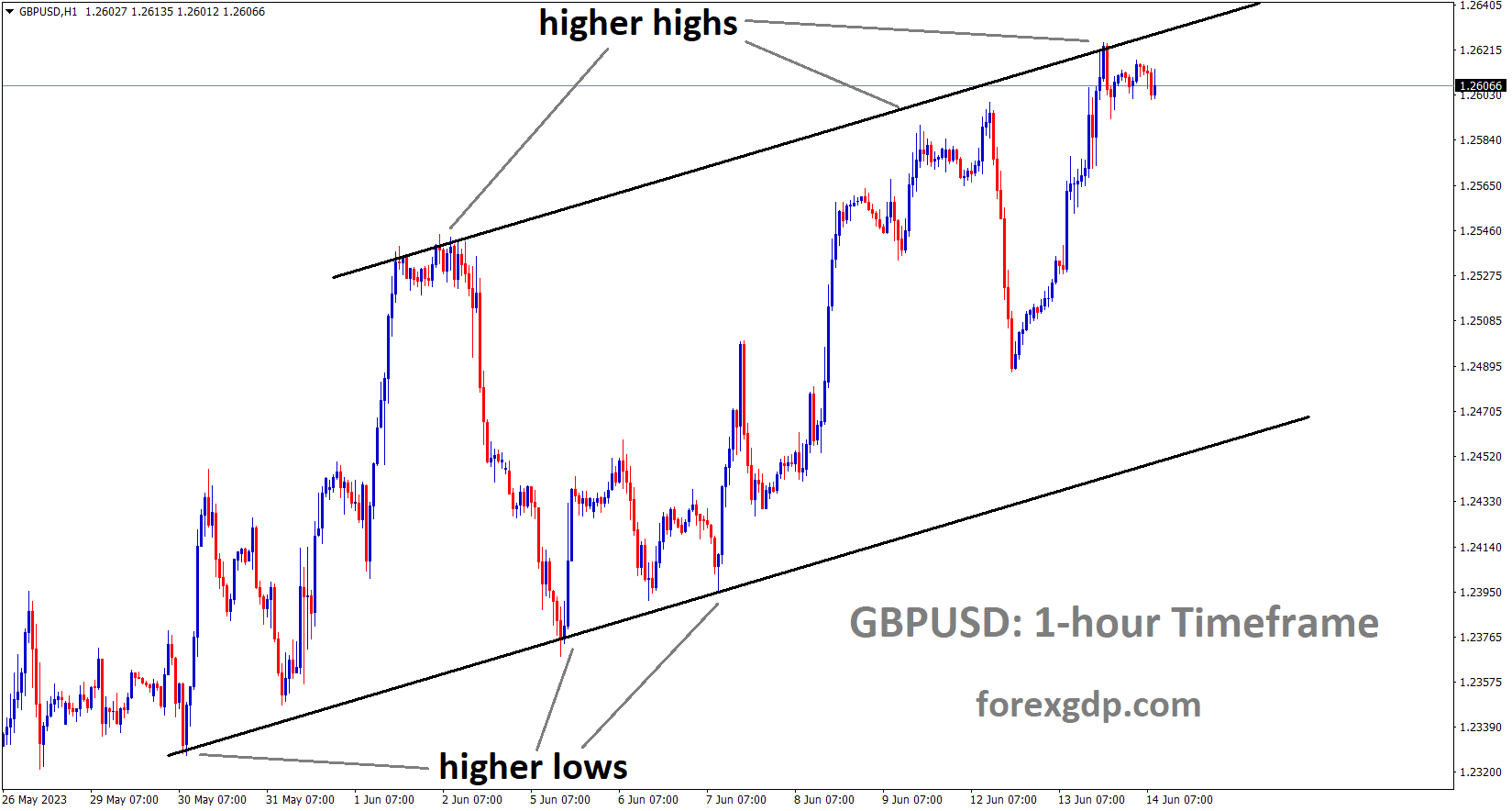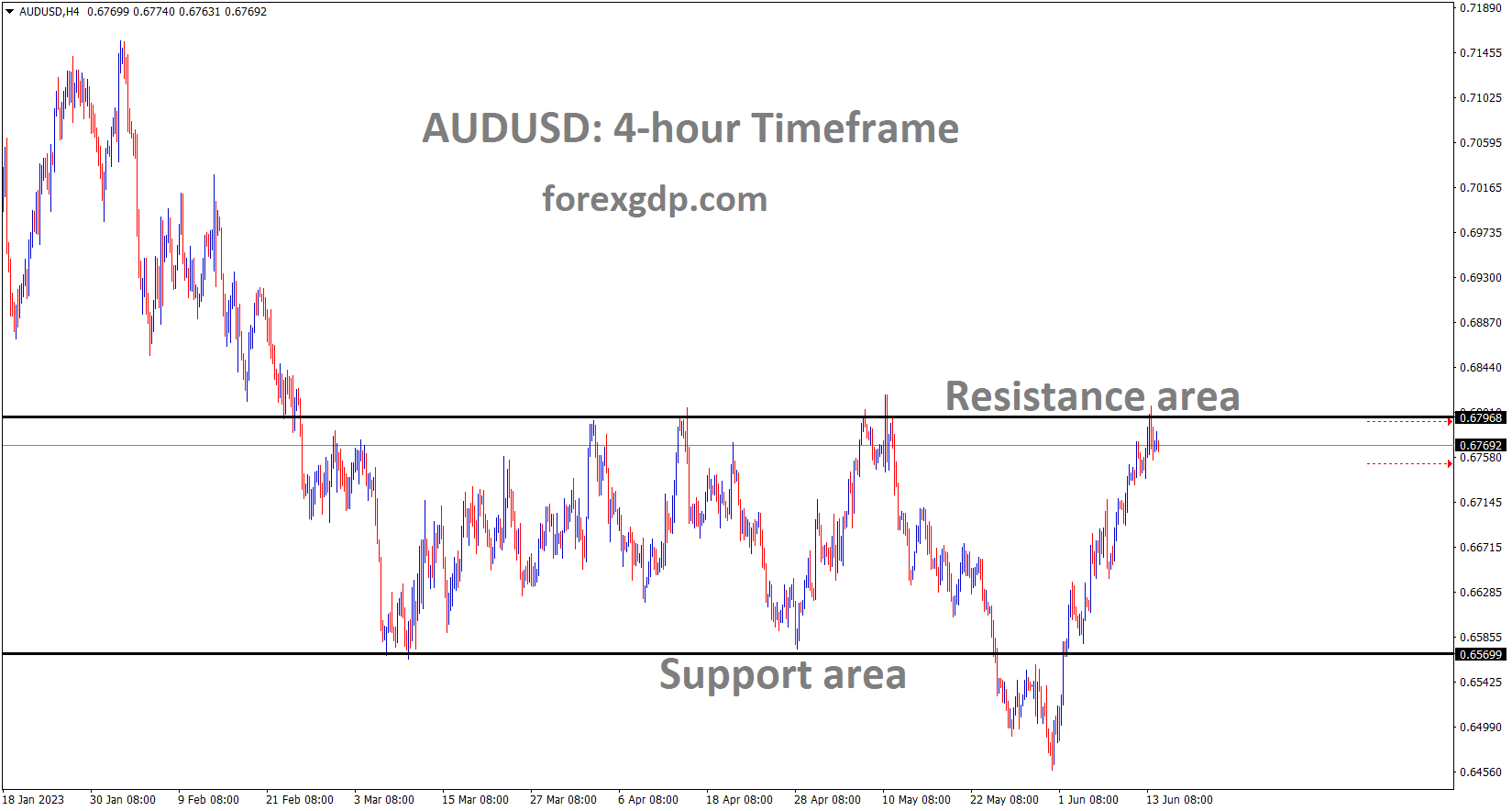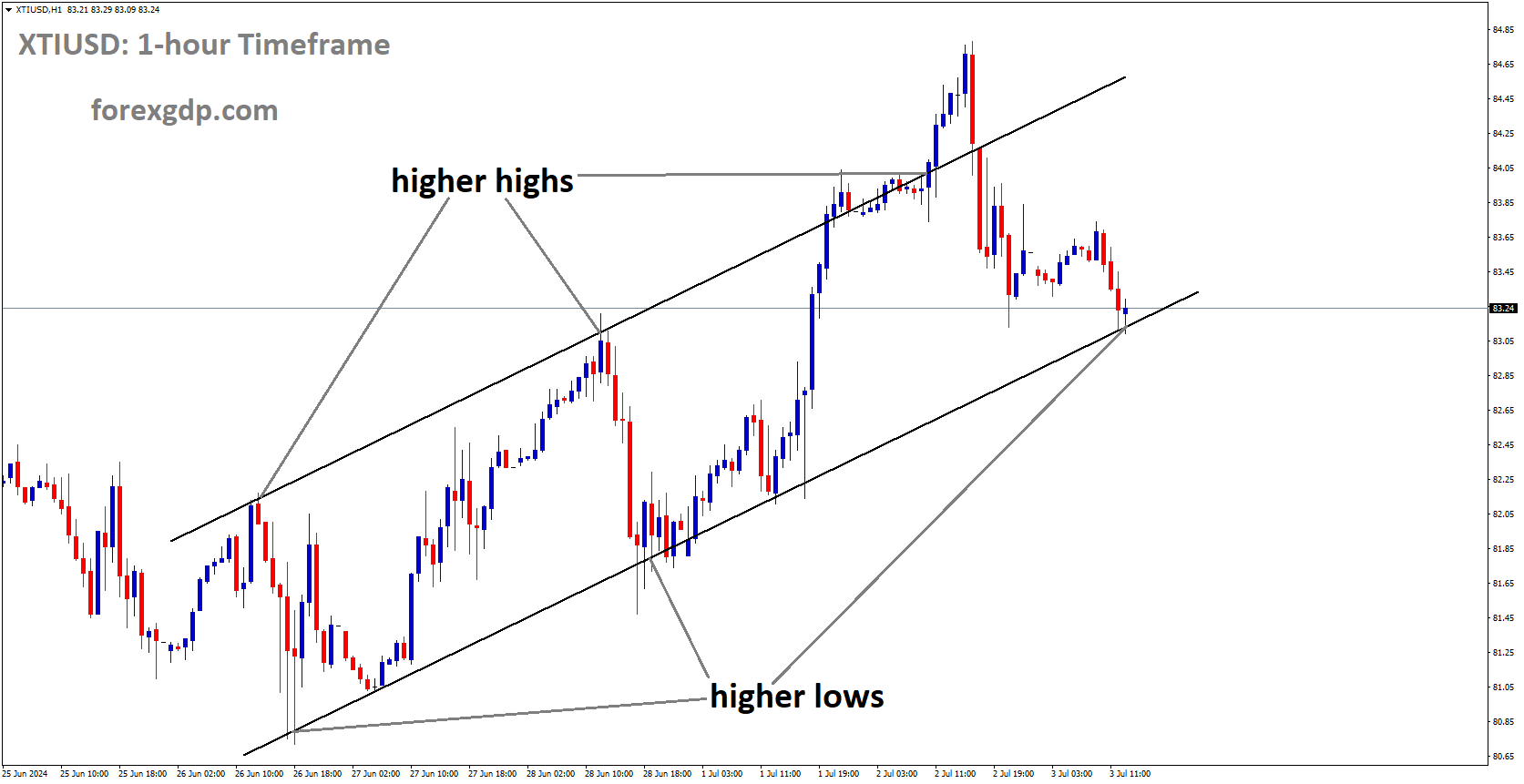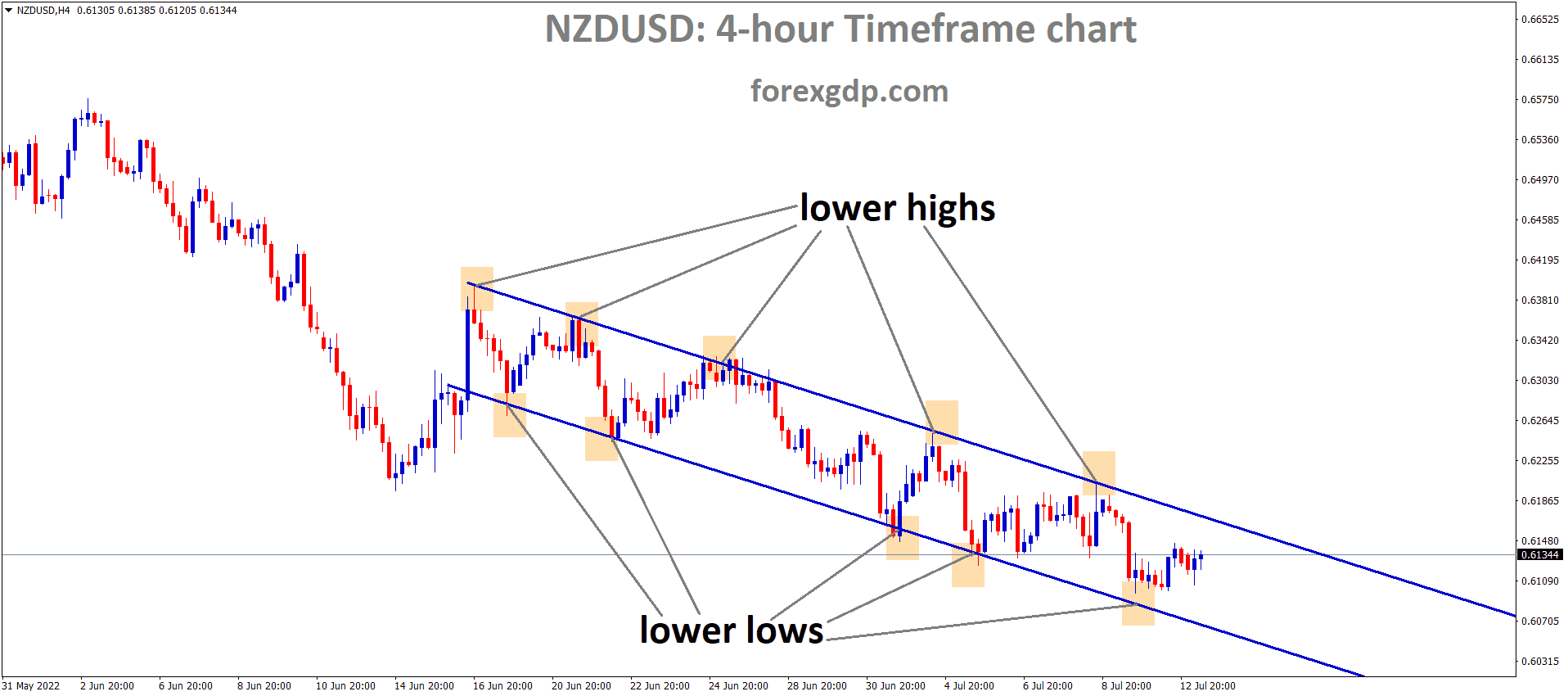USDJPY is moving in an Ascending channel and the market has reached the higher high area of the channel
The Federal Reserve (FED) is anticipated to take a pause during the June meeting. This decision comes as a result of robust job market performance, coupled with a deceleration in wage growth and an increase in unemployment. These factors have led the FED to hold off on implementing any further rate hikes for the current month.

The upcoming U.S. Federal Reserve meeting on June 14 has generated anticipation as experts speculate whether interest rates will remain steady or witness a hike for the first time in 18 months. This article analyzes the factors influencing the decision, including inflation concerns, employment data, and the possibility of a shift in the interest-rate cycle. Additionally, the role of the Federal Open Market Committee (FOMC) and projections for the future are examined, providing insights into the potential trajectory of interest rates.
The Fed’s Dilemma: Holding or Hiking Rates
1.1 Current Interest Rate Speculations
The market is divided on whether the Fed will hold interest rates steady or choose to increase them. Interest rate futures indicate a 1 in 4 chance of a rate hike.
XAUUSD is moving in an Ascending channel and the market has reached the higher low area of the channel
Recent public statements from Fed officials suggest a bias towards increasing rates due to concerns over restrictive monetary policy and high core inflation. However, the Fed may adopt a more patient approach in monitoring the lagged effects of past rate moves during the June meeting.
1.2 Consumer Price Index (CPI) Report Impact
The release of the CPI inflation data for May coincides with the Fed’s meeting. While headline inflation is expected to continue slowing, core inflation may remain above the Fed’s target.
The housing costs component of the CPI could potentially drive inflation lower, according to industry estimates. The CPI report will play a crucial role in shaping the Fed’s decision and its outlook on inflation.
Balancing Inflation and Full Employment
2.1 Monetary Policy and Core Inflation
Fed officials have argued that current monetary policy is restrictive, but core inflation remains elevated. This indicates the Fed’s focus on taming inflationary pressures. However, concerns about high core inflation persist, leading to a potential bias towards further rate hikes. The Fed’s commitment to maintaining price stability remains a key consideration in the decision-making process.
2.2 The Significance of Full Employment
Alongside inflation, the Fed’s mandate includes promoting full employment. The data on employment has been better than expected, indicating a strong jobs market.
However, rising unemployment claims in recent times have raised slight concerns for the Fed. A weakening jobs market could force the Fed to make trade-offs between inflation control and job growth. The interplay between these factors will influence the Fed’s decision.
June Meeting Expectations and Summary of Economic Projections (SEP)
3.1 Median Projections for 2023 Rates
The June meeting will provide the Summary of Economic Projections, including estimates from policymakers on where they see rates at the end of 2023. The March projections indicated most participants expecting rates to remain at current levels, with a few suggesting additional hikes. The updated projections will offer insights into the consensus and any shifts in policymakers’ perspectives.
3.2 Diverging Market Expectations and Potential Dissent
While the Fed is likely to hold rates steady in the June meeting, some policymakers may advocate for higher rates.
EURUSD has broken the Descending channel in upside
Diverging opinions among policymakers indicate a more fine-tuned approach to monetary decision-making. The potential for dissent within the FOMC adds uncertainty to the outcome and highlights the challenges of reaching a consensus decision.
Uncertainty and Flexibility in Monetary Policy
4.1 Credit Tightening and Economic Outlook
The failures of Silicon Valley Bank and Signature Bank in March led to credit tightening, which has prompted Fed leaders to emphasize uncertainty in the economic outlook. However, economic data has surprised on the upside, indicating a more resilient economy. Policymakers are expected to upgrade their forecasts for economic growth, though concerns about reduced lending and potential headwinds remain.
4.2 Upgraded Forecasts for Economic Growth
Forecasts for economic growth in 2023 are likely to be revised upward, indicating continued decent growth. Unemployment rate projections for the end of the year may be lowered, reflecting the strong jobs market. However, the Fed’s focus on inflation may lead to expectations of higher rates throughout 2024, potentially reaching around 4.4% by the end of that year.
Reaching the Peak Rate and Balance Sheet Normalization
5.1 Shrinking Balance Sheets and Future Asset Normalization
As the Fed reaches its peak rate, it is expected to continue shrinking its balance sheet as part of its efforts to normalize its assets.
GBPUSD is moving in an Ascending channel and the market has reached the higher high area of the channel
Two-thirds of economists surveyed believe the FOMC will continue shedding assets even after interest rate cuts commence, likely in the first quarter of 2024. The balance sheet normalization process will be crucial in managing the transition and maintaining economic stability.
5.2 Possibility of a U.S. Recession
The Fed’s staff has predicted a potential U.S. recession, and a majority of economists see a downturn as likely in the next 12 months. The timing of the recession varies, with expectations pointing to the third or fourth quarters. The possibility of a recession adds complexity to the Fed’s decision-making and highlights the need for a delicate balance in monetary policy.
Market Response and Considerations
6.1 Implications for Stock Markets
The Fed’s decision on interest rates will have implications for stock markets. A pause in rate hikes may be seen positively by investors, providing support for further market gains.
However, any hints of further tightening or a hawkish stance from Fed Chair Jerome Powell could dampen the market’s rally and potentially trigger a sell-off.
6.2 Fed’s Communication Challenges
The Fed’s communication about its intentions and policy direction has become more complex. Balancing the need for clarity while considering the uncertainties and potential dissent within the FOMC poses challenges for effective communication. Powell’s post-meeting press conference will provide further insights into the Fed’s thinking and potential impacts on the markets.
6.3 Potential Impact of Credit Downgrade on Treasuries
Although the United States recently suspended the debt ceiling, a credit downgrade remains a possibility. However, Treasuries are perceived as the global safe asset due to their liquidity and stability.
AUDUSD is moving in the box pattern and the market has reached the resistance area of the pattern
A credit downgrade may even lead to a rally in Treasuries, as investors seek safety during market turbulence. Treasuries’ role as a reliable haven asset is unlikely to be significantly impacted by a credit downgrade.
Conclusion
The Federal Reserve’s interest rate decision and outlook are influenced by multiple factors, including inflation concerns, employment data, and market expectations. Balancing the objectives of maintaining price stability and promoting full employment poses challenges for the Fed. The upcoming June meeting, along with the Summary of Economic Projections, will provide important insights into the Fed’s decisions and its projections for future interest rates. Additionally, the Fed’s communication challenges and the impact on markets and safe assets like Treasuries will shape the economic landscape in the coming months.
Don’t trade all the time, trade forex only at the confirmed trade setups.
Get Live Free Signals now: forexgdp.com/forex-signals/

